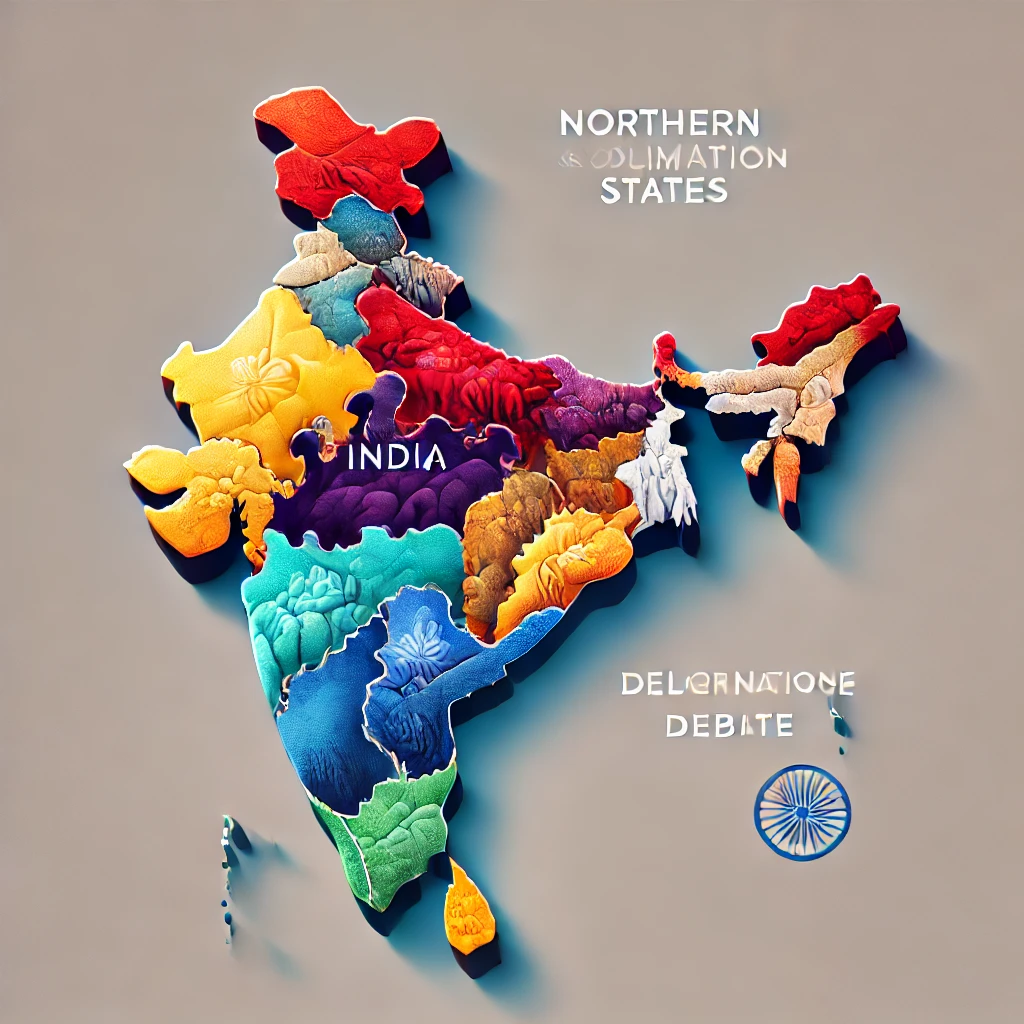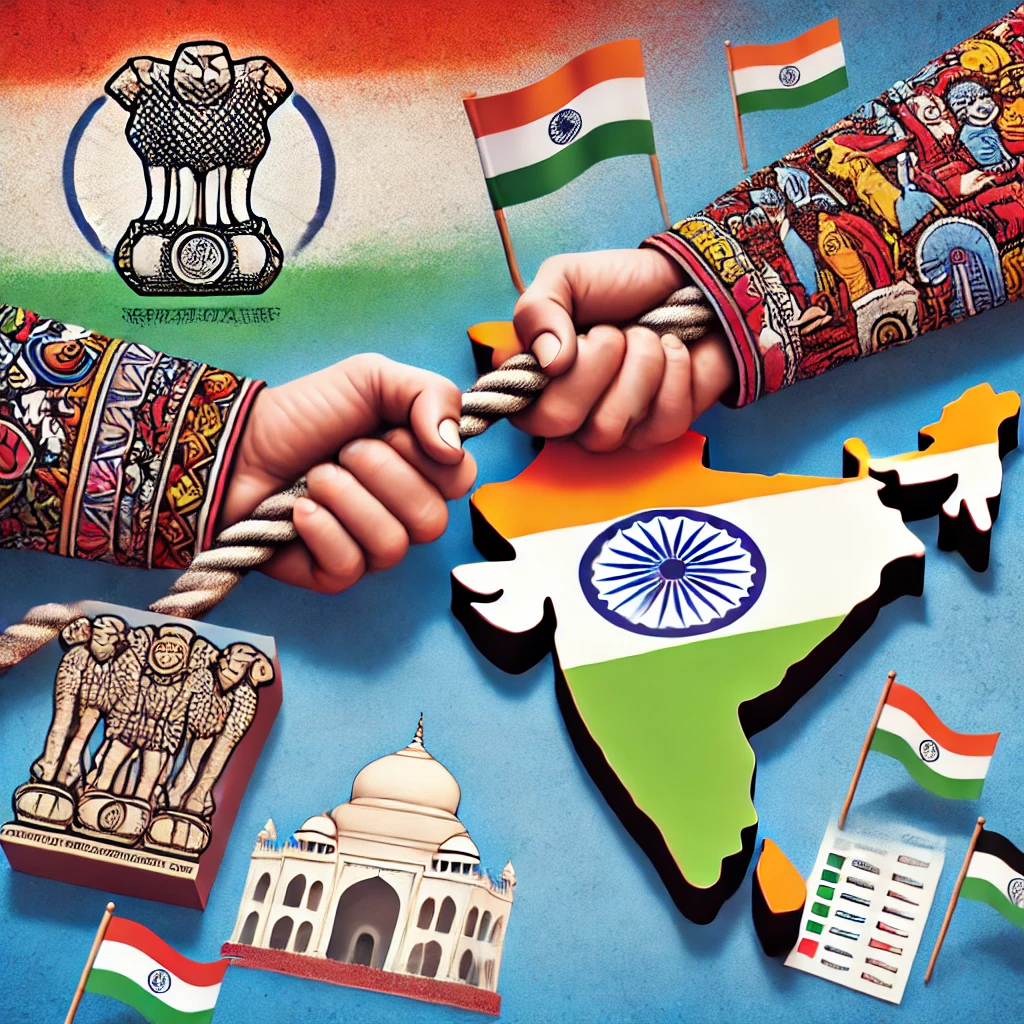The issue of delimitation in India has sparked intense debate, particularly regarding its impact on the balance of political power between northern and southern states. Delimitation refers to the process of redrawing electoral constituencies based on the latest population data. North vs South India While intended to ensure fair representation, the process is controversial due to its potential to shift parliamentary influence towards the more populous northern states, raising concerns among the southern states that have effectively controlled population growth.

Understanding Delimitation
Delimitation is carried out by a commission appointed by the Indian government, with the aim of ensuring that each parliamentary constituency represents an approximately equal number of people.
The last delimitation exercise took place in 2002 but was based on the 1971 Census, as the government decided to freeze the process until 2026 to avoid discouraging states from implementing effective family planning policies. With the next delimitation exercise looming, political analysts and policymakers are debating the potential consequences.
Why is Delimitation Controversial?
The controversy surrounding delimitation arises due to demographic disparities between northern and southern states. Northern states such as Uttar Pradesh, Bihar, Madhya Pradesh, and Rajasthan have experienced significant population growth, whereas southern states like Kerala, Tamil Nadu, Karnataka, and Andhra Pradesh have managed to control their birth rates. If parliamentary seats are reallocated based on the latest census, the north could gain a substantial number of seats, while the south might lose its relative political influence.
1. Disproportionate Representation
One of the primary concerns is that states that have successfully implemented population control measures may be penalized. For example, Tamil Nadu and Kerala, which have lower fertility rates, may see their representation in Parliament reduced, while states with higher fertility rates may gain additional seats. This raises questions about whether the existing system is fair to states that have been proactive in managing population growth.
2. Federalism and Governance
India follows a quasi-federal structure, where power is divided between the central and state governments. The redistribution of parliamentary seats could weaken the political clout of southern states, impacting their ability to negotiate policies with the central government. Many leaders from the south argue that this could lead to an imbalance in national governance, disproportionately favoring the interests of the north.
3. Economic Contribution vs. Political Representation
Southern states contribute significantly to India’s economy. Tamil Nadu, Karnataka, and Telangana have some of the highest Gross State Domestic Products (GSDP) and attract substantial foreign investment. These states argue that their economic contributions should be reflected in their political influence, and delimitation should not diminish their representation.
4. Cultural and Linguistic Concerns
Beyond politics and economics, there is also a cultural dimension to this debate. Southern states have distinct linguistic and cultural identities, and reduced representation in Parliament could lead to policies that do not adequately reflect the diversity of India. The imposition of policies favoring the Hindi-speaking belt over the non-Hindi-speaking south has been a historical concern, and delimitation could exacerbate these fears.
Potential Solutions and the Way Forward
While the delimitation debate remains contentious, several solutions have been proposed to address concerns from both sides:
1. A Balanced Approach to Seat Redistribution
One proposal is to limit the reduction of seats in states with lower population growth while increasing representation in rapidly growing states. This could ensure a fair distribution of political power without significantly undermining the influence of any region.
2. A Separate House for Equitable Representation
Another suggestion is to strengthen the role of the Rajya Sabha (Upper House of Parliament), where states have equal representation regardless of population. This could help maintain balance even if Lok Sabha (Lower House) seats are redistributed.
3. Incentives for Population Control
Instead of penalizing states that have controlled their populations, the central government could introduce incentives such as greater financial allocations or more decision-making power in national policies.
4. National Consultation and Consensus
A nationwide discussion involving all stakeholders—politicians, economists, and demographers—could help arrive at a consensus. Since delimitation has far-reaching consequences, ensuring transparency and cooperation is crucial.
ALSO READ MORE- TSPSC Group 2 – 2025 Results: How to Verify
Conclusion
The upcoming delimitation exercise in India is a crucial step in shaping the country’s political future. While it aims to ensure fair representation, it also raises significant concerns about regional imbalances, economic disparities, and cultural identities. The challenge lies in implementing a solution that is equitable for all states, ensuring that both political representation and economic contributions are fairly accounted for. As India moves forward, a thoughtful and inclusive approach will be essential to maintaining the country’s democratic integrity and federal structure.
For further details on delimitation and its implications, refer to official sources such as the Election Commission of India and government reports on census data from Census India.
